
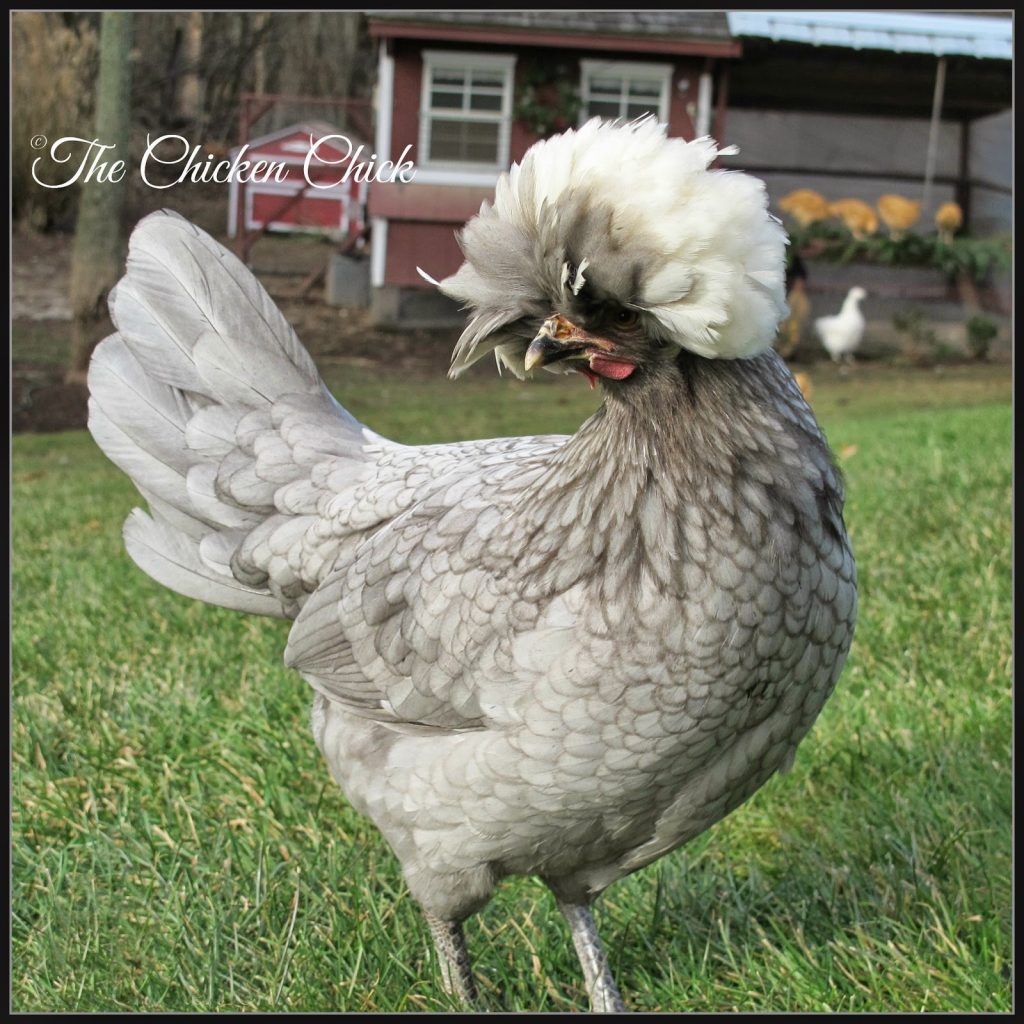
*ADVISORY: Video contains graphic anatomical images of hen laying an egg. Viewer discretion is advised.
FASCINATING FACTS ABOUT EGGS
A hen does not need a rooster to produce an egg. That’s not really a fascinating fact, it’s just something I had to get off my chest. ☺
A hen must mate with a rooster in order for her egg to contain both the male and female genetic material necessary to create an embryo inside the egg. An infertile egg contains only the hen’s genetic material, which means a chick can never hatch from that egg. Much more about fertile and infertile eggs in this article.
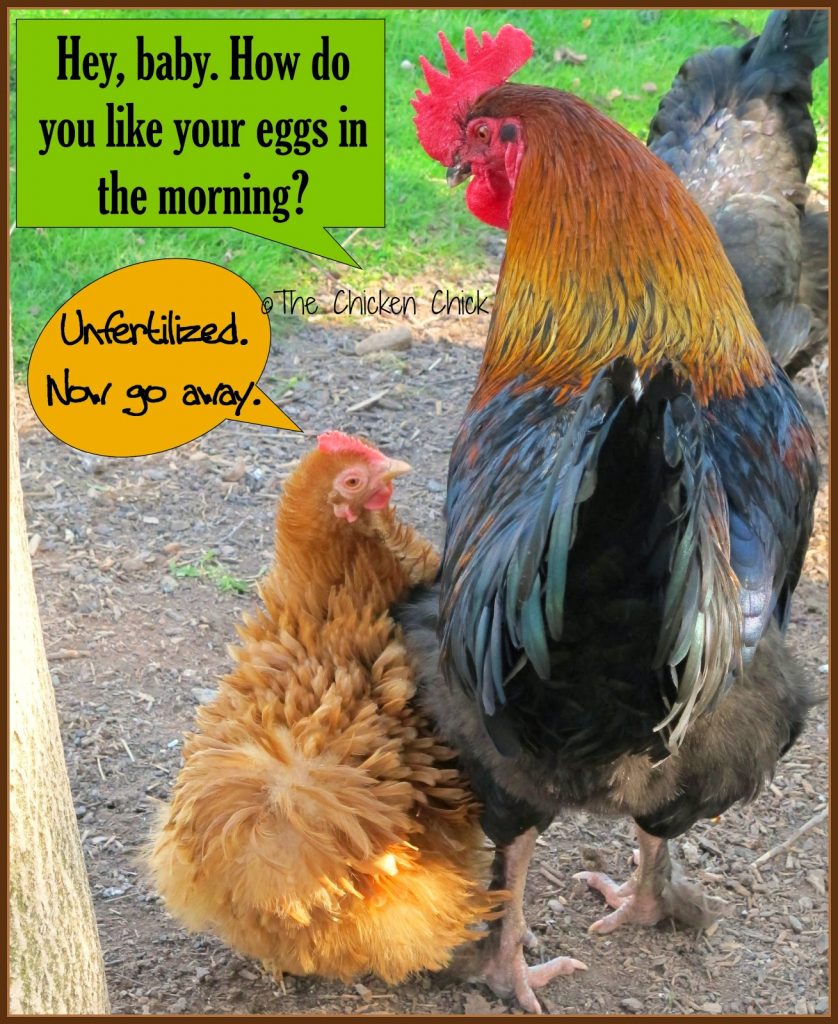
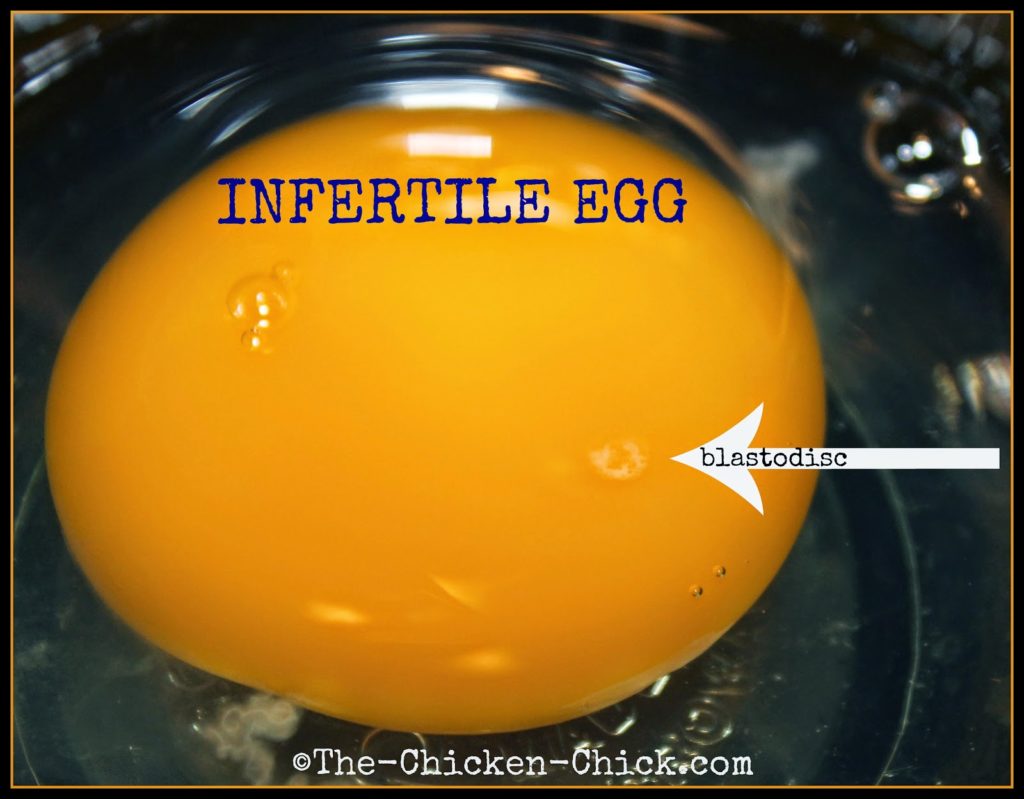
When a female baby chick hatches, she possesses all the egg yolks (ova) she will ever have. She could never run out of egg yolks even if she laid one egg each day of her life.
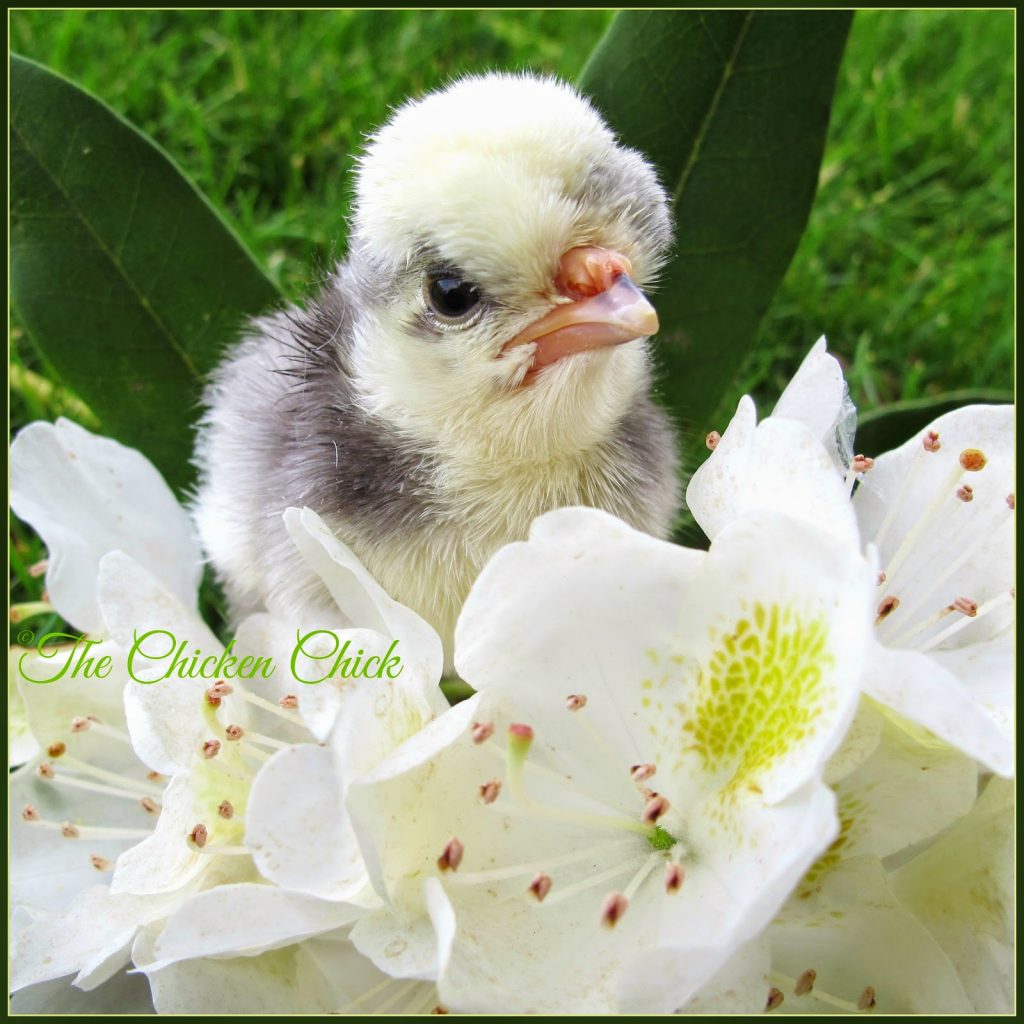
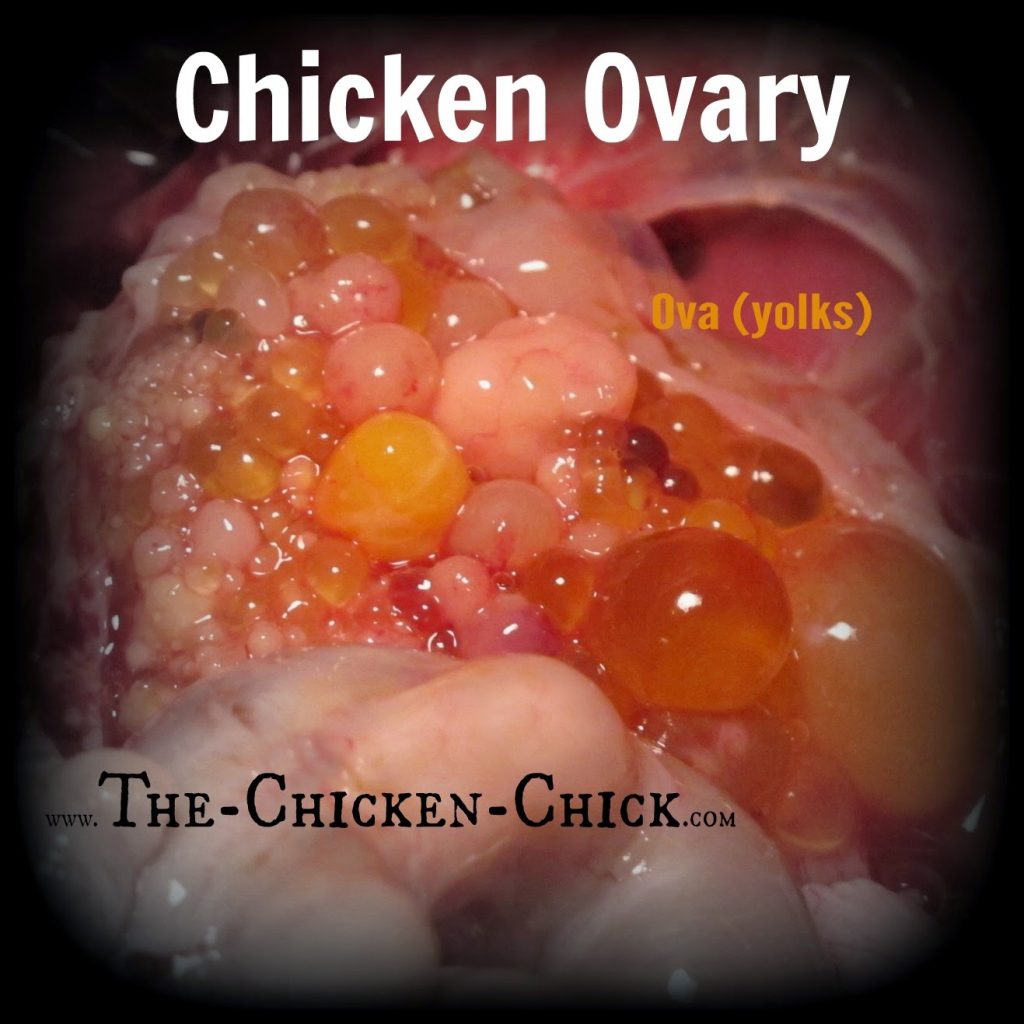
This is the ovary of a hen, showing ova (yolks) in various stages of development during a post mortem exam.
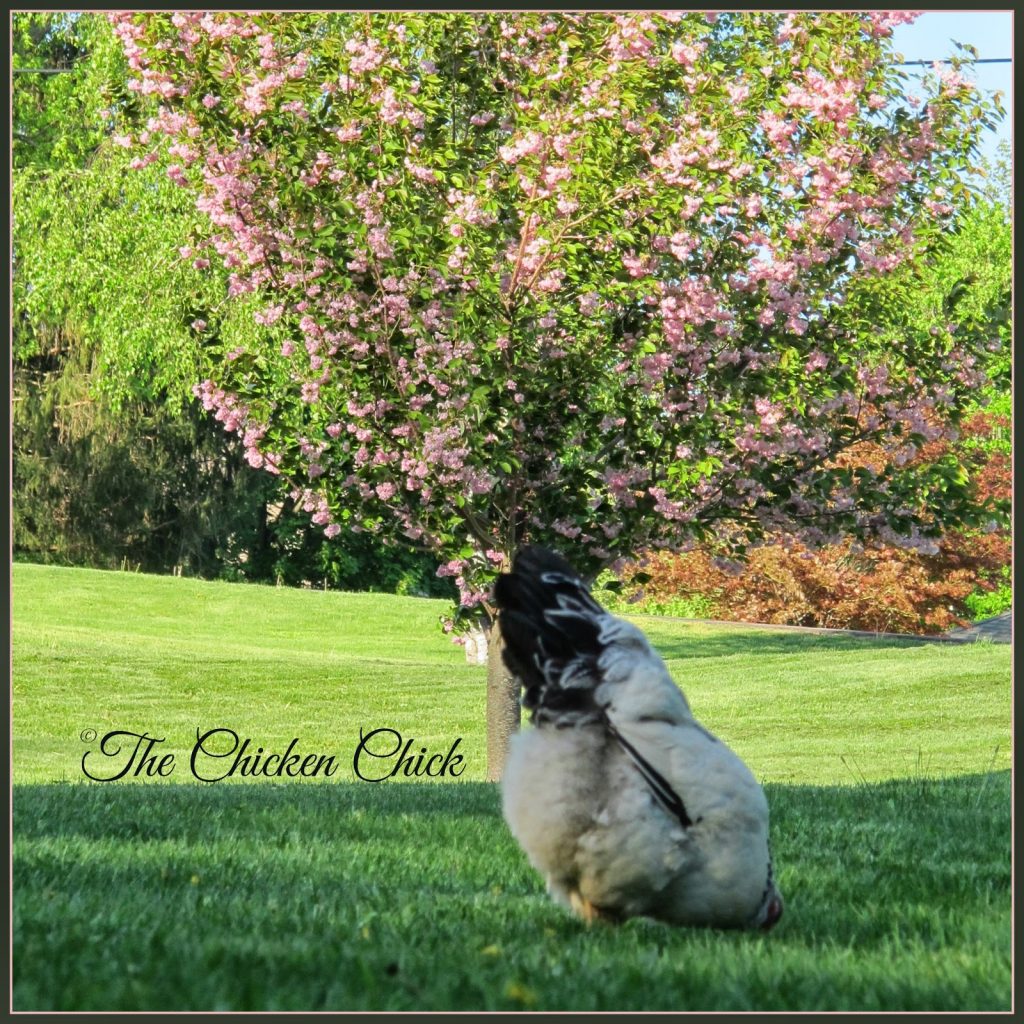
It takes, on average, 25 hours for a hen to make an egg from the time the yolk is released from her only ovary to the time it is laid. A well cared for hen can continue to lay eggs for 10 years or more, although never at the same rate as during her first two years of production.
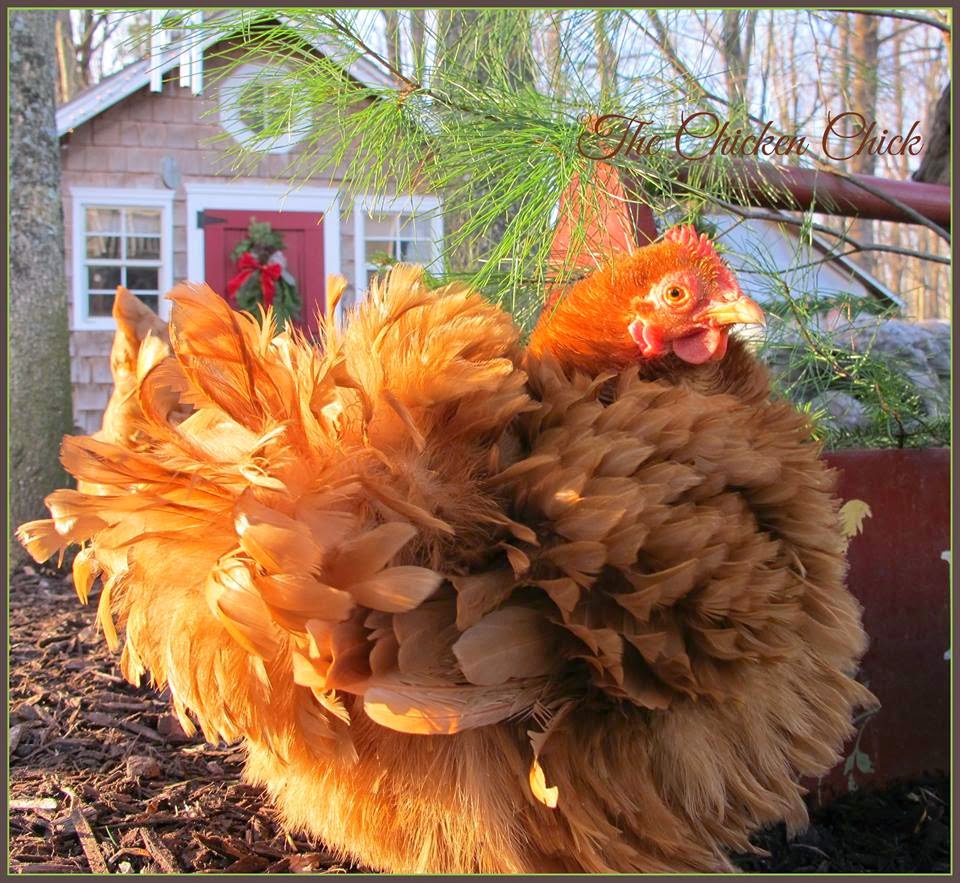
Lighting conditions influence egg production. A hen senses light through the pineal gland near its eyes, which triggers a hormone flow to begin the egg-production process. In autumn and winter, when daylight hours are shorter in many parts of the world, egg production can be supported by adding light to the hen house several hours before dawn for a maximum of 16 hours of light total per day. There are no harmful long-term or short-term effects to the hen in providing supplemental light. Hens do not need a break from egg-laying, they will not run out of eggs and they will not molt late when supplemental light is added to the coop properly. Light is one of the many resources required by a hen in order to produce eggs, it does not cause or force her to do so. If she does not possess all the resources required to lay eggs, she will not.
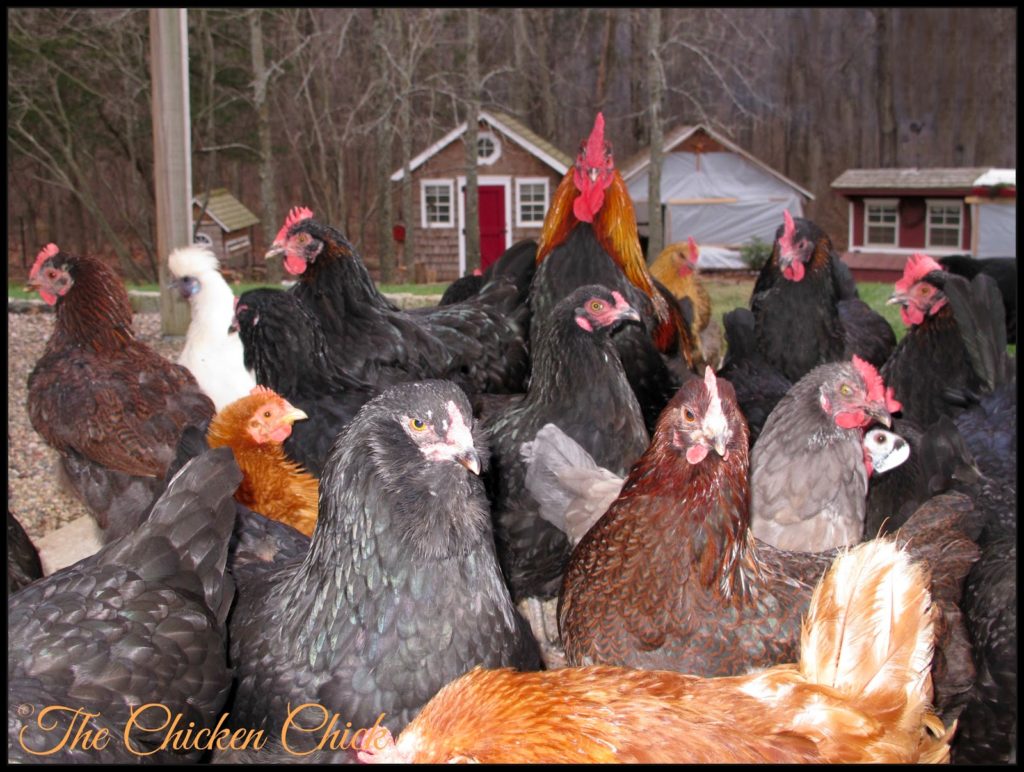
Scientists have proven that a hen does not need to see light with its eyes, it senses light with its pineal gland. They know this from working with blind hens who continue to lay eggs in response to varied lighting conditions.
Hard-cooked, freshly laid eggs are harder to peel than older eggs. As an egg ages, the air cell at the end of the egg gets bigger. As the air cell gets bigger, the membrane surrounding the inside of the egg gets farther away from the shell, making it easier to peel than a fresher egg. Learn the no-additive trick to peeling fresh eggs on my blog here.
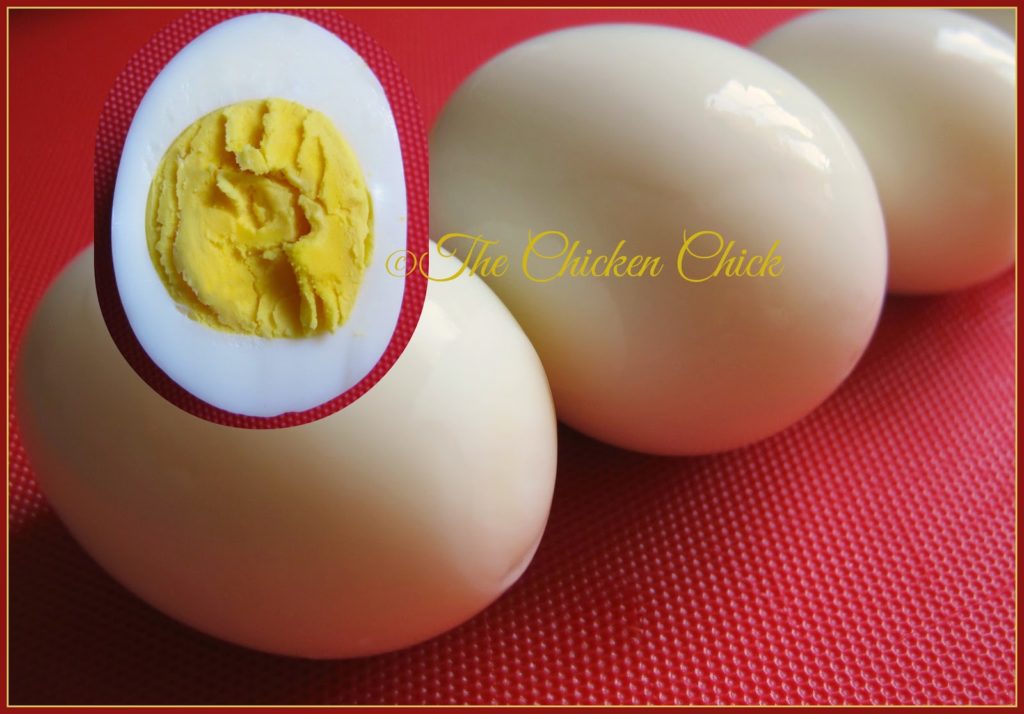
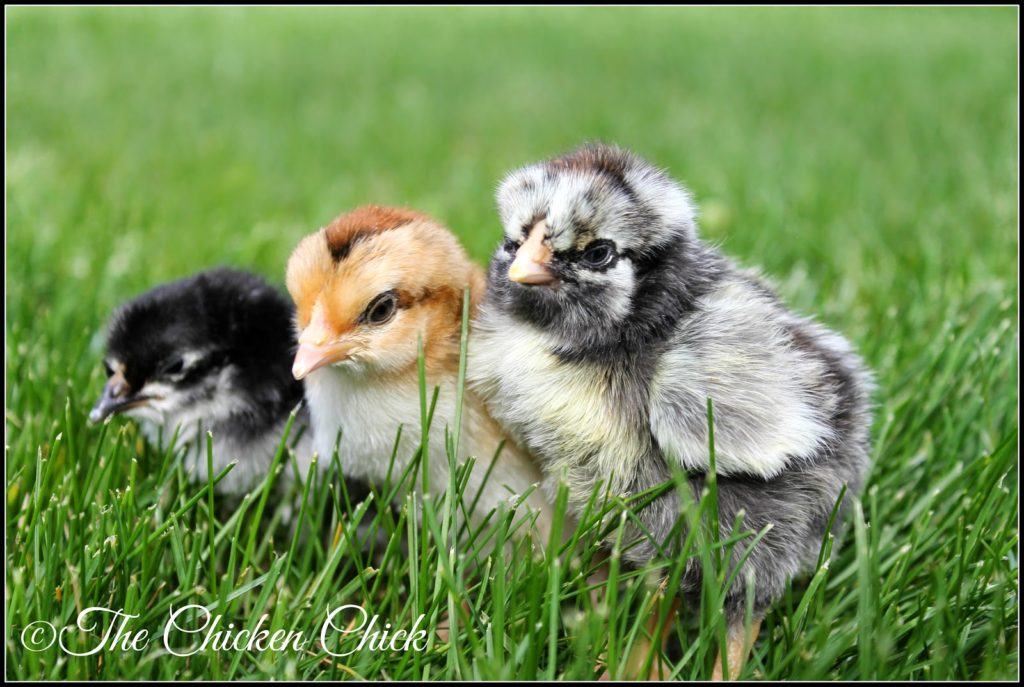
One form of Salmonella, Salmonella Enteritidis, can live inside the ovaries of healthy-looking hens and contaminate an egg before the egg is laid. Chicks given probiotics from the time they hatch are much less likely to contract Salmonella Enteritidis than those that are not. Most commercially available chicken feeds contain prebiotics and probiotics already; there is no value to adding more to their diet
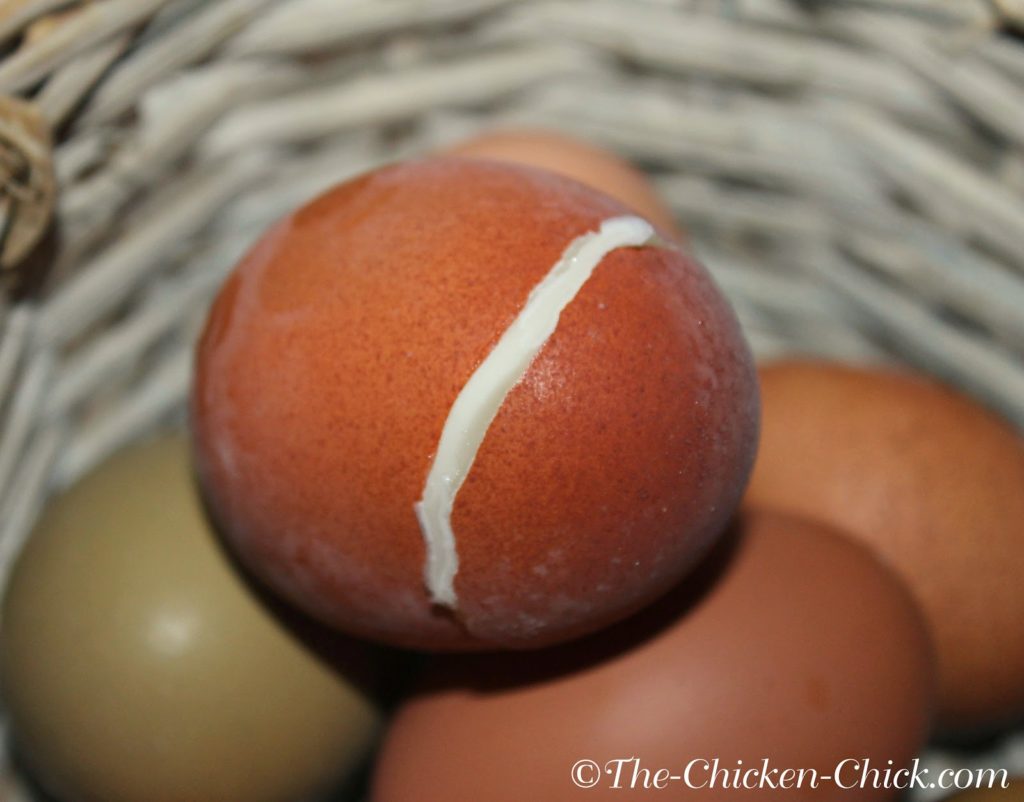
Frozen eggs found in a nest box during very cold weather may or may not be safe to eat. Cracked eggs can allow contaminants to enter, making it unsafe to eat. My policy is: when in doubt, throw it out. Click on this link for much more about frozen egg food safety and how to prevent frozen eggs.
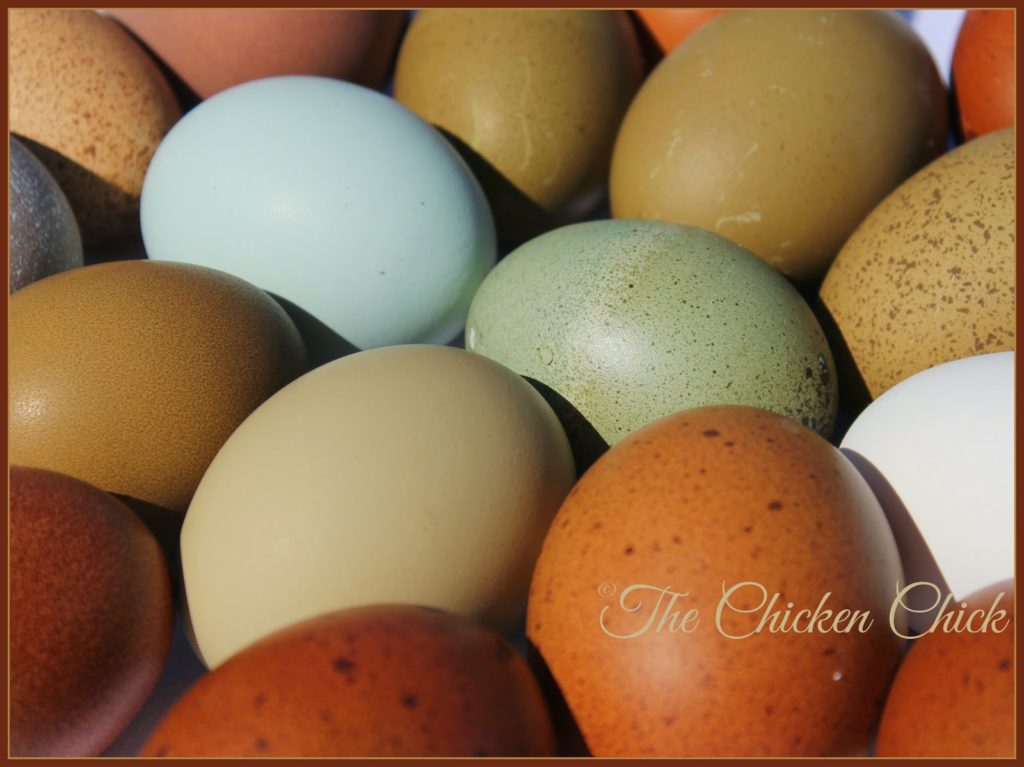
The color of an egg is determined by the hen’s breed/genetics. Eggs can be white, brown, blue or any combination of those colors.
The last stop on a hen’s reproductive tract is the uterus, also known as the shell gland. All egg shells are originally white. Scientists believe colored eggs get their color in either the uterus or vagina.
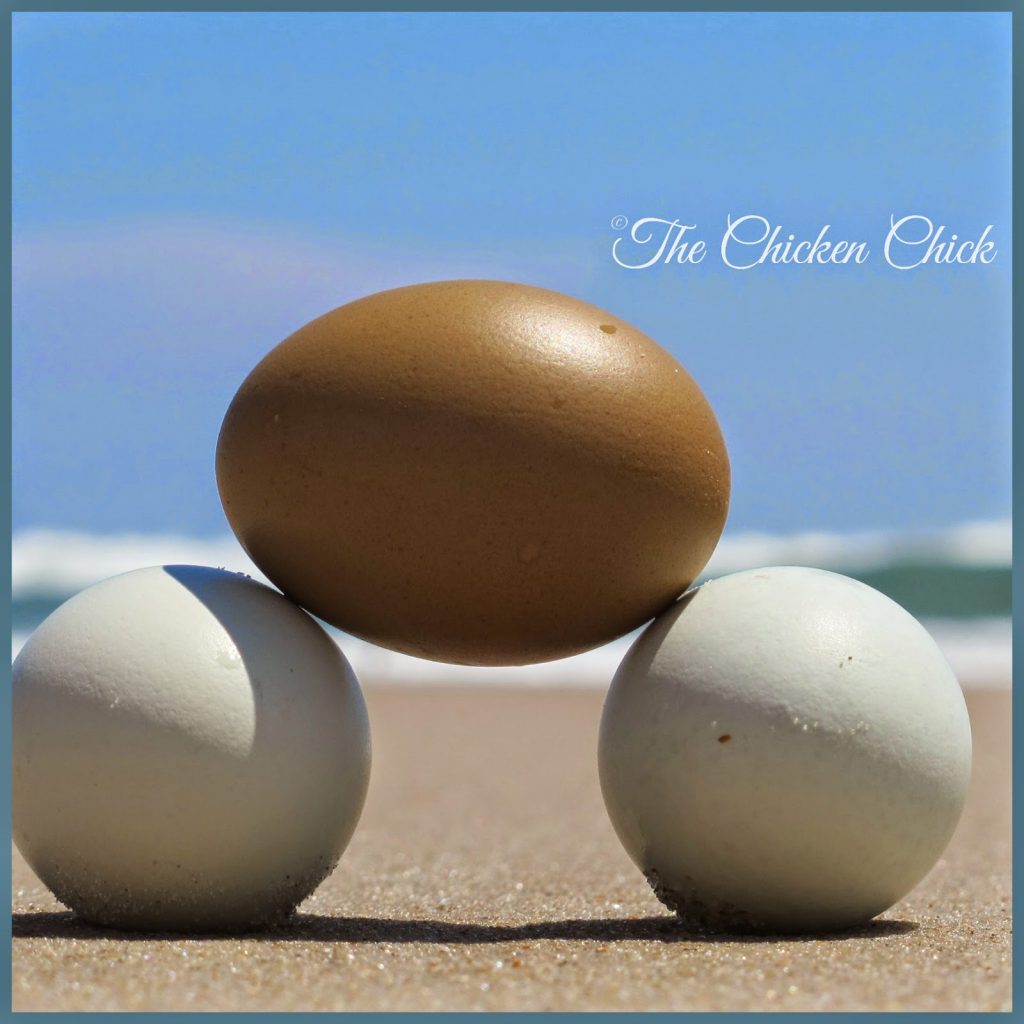
Blue eggshells are produced by the pigment oocyanin, a by-product of bile formation. The blue pigment is applied early in the shell’s formation and penetrates the entire shell. The blue coloring cannot be rubbed off.
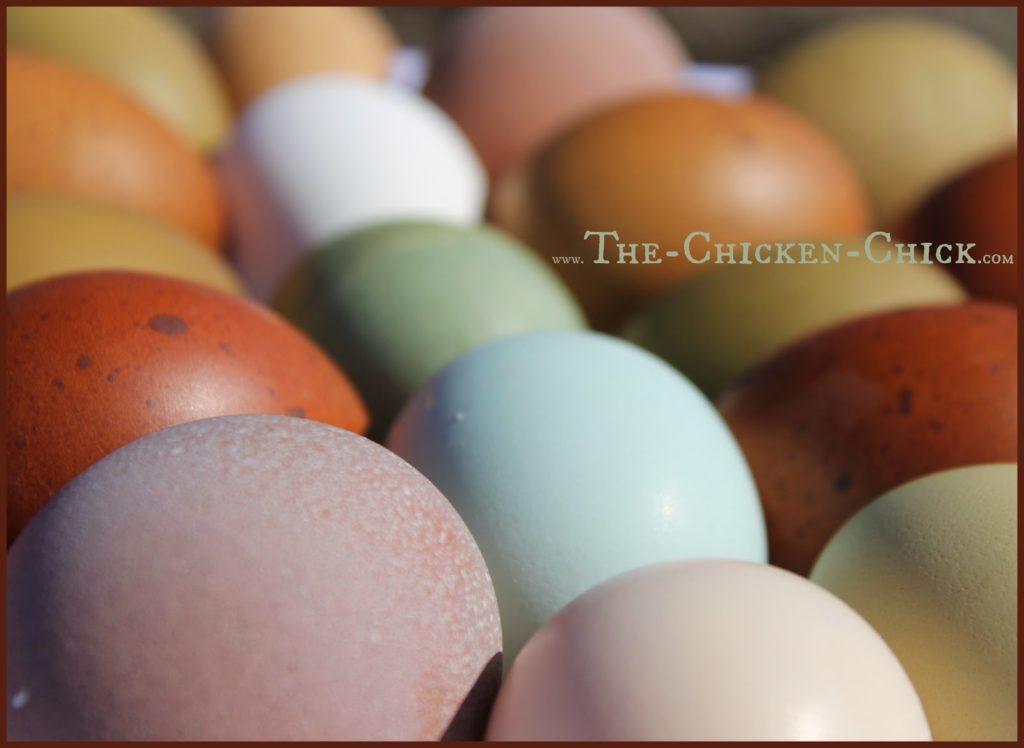
Brown egg shells contain the pigment protoporphyrin, which is a by-product of hemoglobin in the blood. The brown pigment is applied during the formation of the last layer of the egg, also known as the bloom or cuticle. The inside of a brown egg is white.
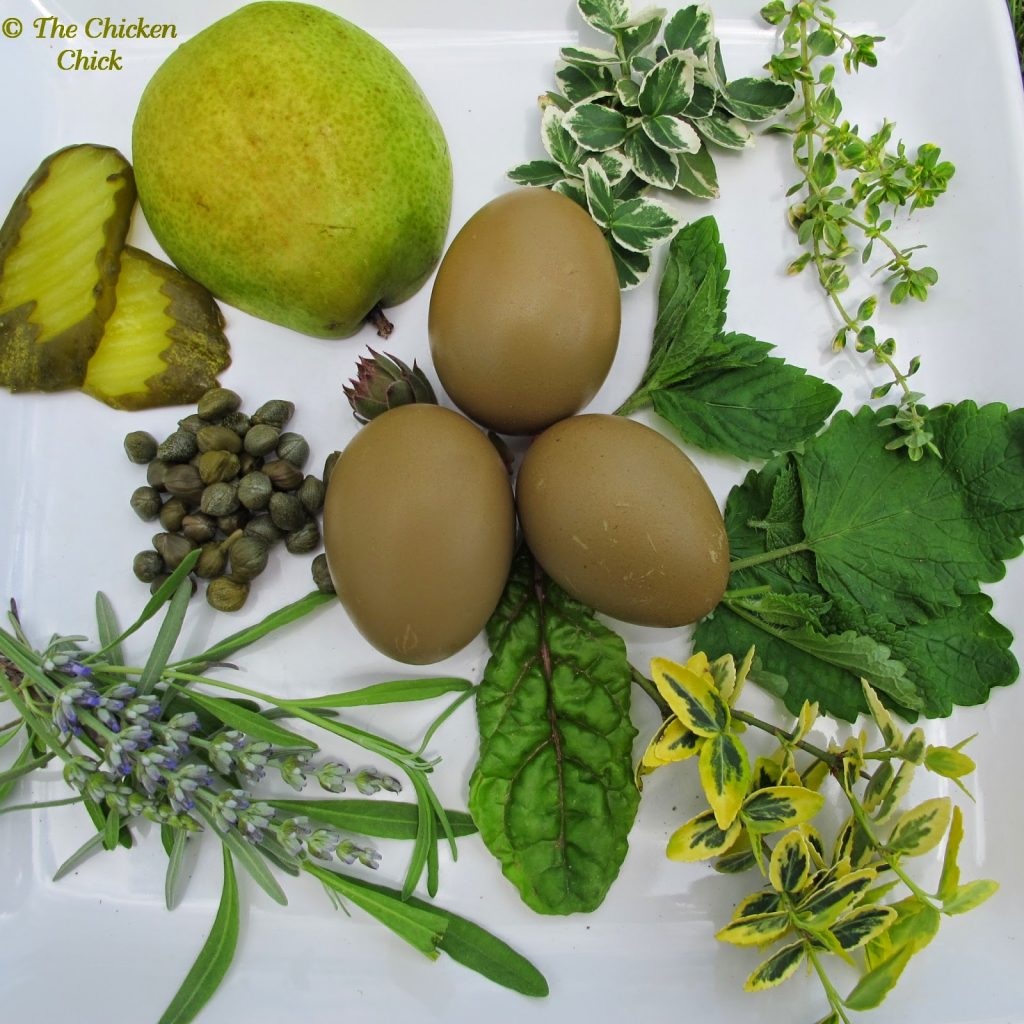
An Easter Egger, or in certain circumstances, an Olive Egger, is a hen produced by mating a blue egg-laying breed with a brown egg laying breed. A green egg is blue on the inside with brown pigment on top of the shell, which creates the green hue.

Kathy Shea Mormino
Affectionately known internationally as The Chicken Chick®, Kathy Shea Mormino shares a fun-loving, informative style to raising backyard chickens. …Read on


shop my SPONSORS


*ADVISORY: Video contains graphic anatomical images of hen laying an egg. Viewer discretion is advised.
FASCINATING FACTS ABOUT EGGS
A hen does not need a rooster to produce an egg. That’s not really a fascinating fact, it’s just something I had to get off my chest. ☺
A hen must mate with a rooster in order for her egg to contain both the male and female genetic material necessary to create an embryo inside the egg. An infertile egg contains only the hen’s genetic material, which means a chick can never hatch from that egg. Much more about fertile and infertile eggs in this article.


When a female baby chick hatches, she possesses all the egg yolks (ova) she will ever have. She could never run out of egg yolks even if she laid one egg each day of her life.


This is the ovary of a hen, showing ova (yolks) in various stages of development during a post mortem exam.

It takes, on average, 25 hours for a hen to make an egg from the time the yolk is released from her only ovary to the time it is laid. A well cared for hen can continue to lay eggs for 10 years or more, although never at the same rate as during her first two years of production.

Lighting conditions influence egg production. A hen senses light through the pineal gland near its eyes, which triggers a hormone flow to begin the egg-production process. In autumn and winter, when daylight hours are shorter in many parts of the world, egg production can be supported by adding light to the hen house several hours before dawn for a maximum of 16 hours of light total per day. There are no harmful long-term or short-term effects to the hen in providing supplemental light. Hens do not need a break from egg-laying, they will not run out of eggs and they will not molt late when supplemental light is added to the coop properly. Light is one of the many resources required by a hen in order to produce eggs, it does not cause or force her to do so. If she does not possess all the resources required to lay eggs, she will not.

Scientists have proven that a hen does not need to see light with its eyes, it senses light with its pineal gland. They know this from working with blind hens who continue to lay eggs in response to varied lighting conditions.
Hard-cooked, freshly laid eggs are harder to peel than older eggs. As an egg ages, the air cell at the end of the egg gets bigger. As the air cell gets bigger, the membrane surrounding the inside of the egg gets farther away from the shell, making it easier to peel than a fresher egg. Learn the no-additive trick to peeling fresh eggs on my blog here.


One form of Salmonella, Salmonella Enteritidis, can live inside the ovaries of healthy-looking hens and contaminate an egg before the egg is laid. Chicks given probiotics from the time they hatch are much less likely to contract Salmonella Enteritidis than those that are not. Most commercially available chicken feeds contain prebiotics and probiotics already; there is no value to adding more to their diet

Frozen eggs found in a nest box during very cold weather may or may not be safe to eat. Cracked eggs can allow contaminants to enter, making it unsafe to eat. My policy is: when in doubt, throw it out. Click on this link for much more about frozen egg food safety and how to prevent frozen eggs.

The color of an egg is determined by the hen’s breed/genetics. Eggs can be white, brown, blue or any combination of those colors.
The last stop on a hen’s reproductive tract is the uterus, also known as the shell gland. All egg shells are originally white. Scientists believe colored eggs get their color in either the uterus or vagina.

Blue eggshells are produced by the pigment oocyanin, a by-product of bile formation. The blue pigment is applied early in the shell’s formation and penetrates the entire shell. The blue coloring cannot be rubbed off.

Brown egg shells contain the pigment protoporphyrin, which is a by-product of hemoglobin in the blood. The brown pigment is applied during the formation of the last layer of the egg, also known as the bloom or cuticle. The inside of a brown egg is white.

An Easter Egger, or in certain circumstances, an Olive Egger, is a hen produced by mating a blue egg-laying breed with a brown egg laying breed. A green egg is blue on the inside with brown pigment on top of the shell, which creates the green hue.





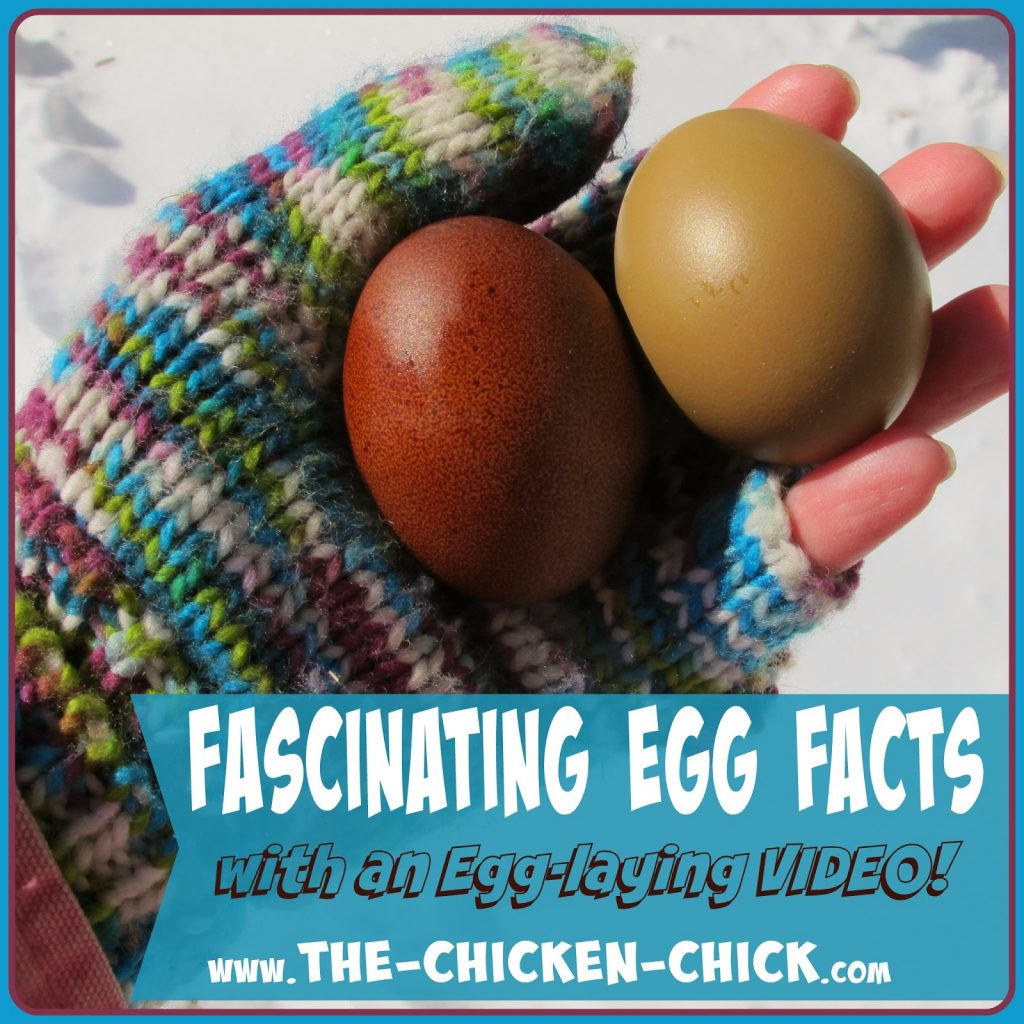



















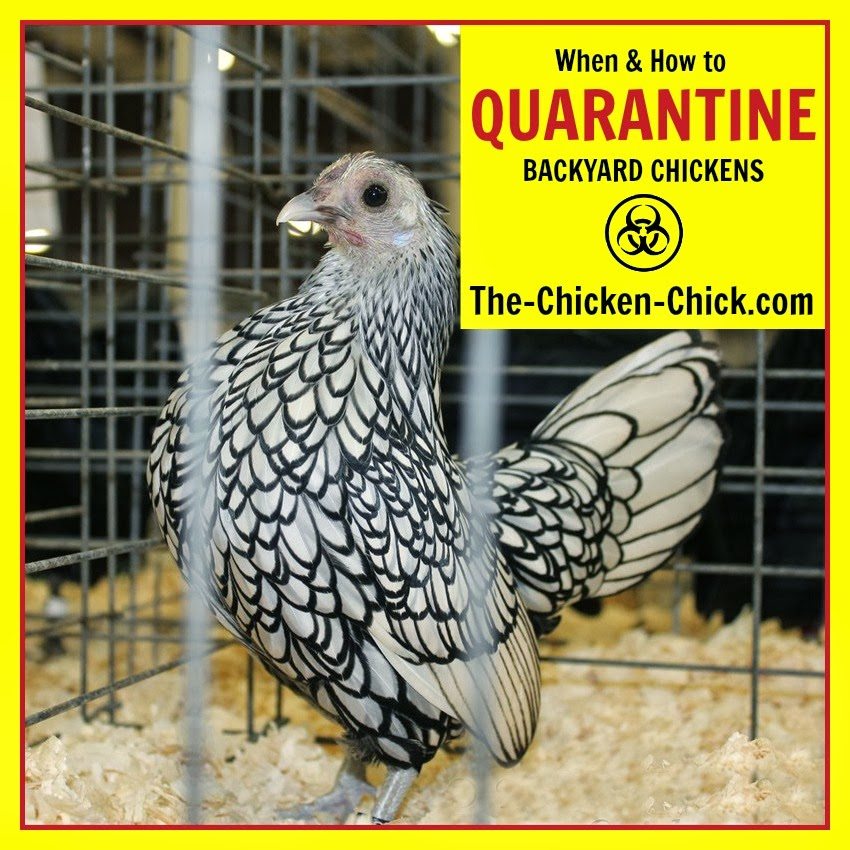















If you train them to go to feed buy penning them on their coop at night every day they should learn that that’s where they’re supposed to go. When our chickens were about 6-7 weeks old we put them in a small pen inside where we want them to spend the night. They almost always go back to the coop at night now. (Aside from one or two hens who sleep on their nests.) I’ve also noticed that when we can’t find a hen for a few days if we don’t find her before about three weeks we either lost… Read more »
I now only have 4 Welsummer hens and yet I can tell you which one laid which egg because the basic pattern for each hen is regular. Sometimes they “screw-up my system” but I just laugh them off. Couldn’t do it when I had 3doz Wels….My little Turken still lays a “torpedo egg” and will probably never quit…if she ever should…she will be at the only vet in a 50mile area that will see her. (dog/cat vet a 5 minute walk from house…lol)…I am now trying to figure out which Silkie Bantam is laying which egg…only 2 girls to choose… Read more »
She could have gone missing due to predation, but they need to be coop trained. http://www.the-chicken-chic…
Thanks for sharing these facts. I’ve just started with chickens this year and am still learning. We started with 16, and now we have 14. One went missing yesterday (we free range) and I’ve looked everywhere. They do not all go in their coop at night, is there a way to get them to come in?
Wonderful, sounded silly, but I needed to be sure and I knew you’d know for sure :) I have a ridiculous number of roosters, 7 out of my 31 chickens, but everyone’s getting along and I love them. Funny story, my largest roo was just starting to get frisky, my girls were only used to a banty roo so I think he scared them a little. One of my older girls decided to teach him to be a gentlemen, if a girl was quiet she’d leave them be, but if she put up a fight my Silvia would charge across… Read more »